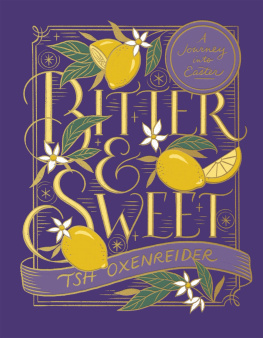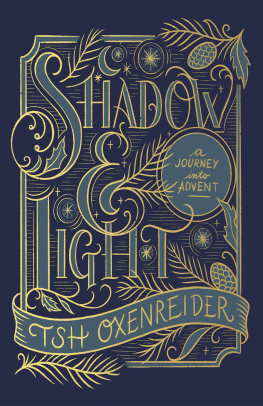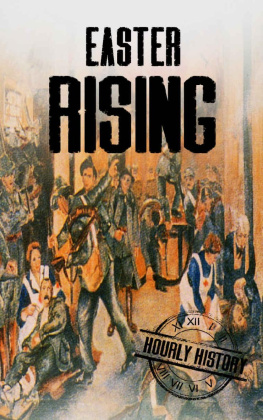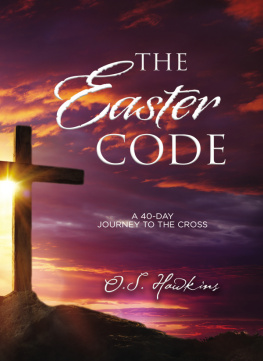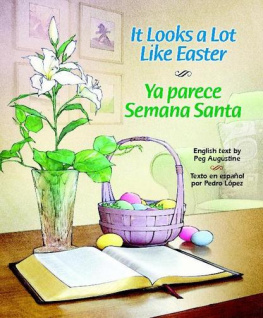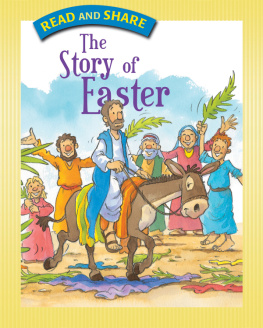Tsh Oxenreider - Bitter and Sweet: A Journey into Easter
Here you can read online Tsh Oxenreider - Bitter and Sweet: A Journey into Easter full text of the book (entire story) in english for free. Download pdf and epub, get meaning, cover and reviews about this ebook. year: 2022, publisher: Harvest House Publishers, genre: Religion. Description of the work, (preface) as well as reviews are available. Best literature library LitArk.com created for fans of good reading and offers a wide selection of genres:
Romance novel
Science fiction
Adventure
Detective
Science
History
Home and family
Prose
Art
Politics
Computer
Non-fiction
Religion
Business
Children
Humor
Choose a favorite category and find really read worthwhile books. Enjoy immersion in the world of imagination, feel the emotions of the characters or learn something new for yourself, make an fascinating discovery.
- Book:Bitter and Sweet: A Journey into Easter
- Author:
- Publisher:Harvest House Publishers
- Genre:
- Year:2022
- Rating:5 / 5
- Favourites:Add to favourites
- Your mark:
- 100
- 1
- 2
- 3
- 4
- 5
Bitter and Sweet: A Journey into Easter: summary, description and annotation
We offer to read an annotation, description, summary or preface (depends on what the author of the book "Bitter and Sweet: A Journey into Easter" wrote himself). If you haven't found the necessary information about the book — write in the comments, we will try to find it.
Bitter and Sweet: A Journey into Easter — read online for free the complete book (whole text) full work
Below is the text of the book, divided by pages. System saving the place of the last page read, allows you to conveniently read the book "Bitter and Sweet: A Journey into Easter" online for free, without having to search again every time where you left off. Put a bookmark, and you can go to the page where you finished reading at any time.
Font size:
Interval:
Bookmark:

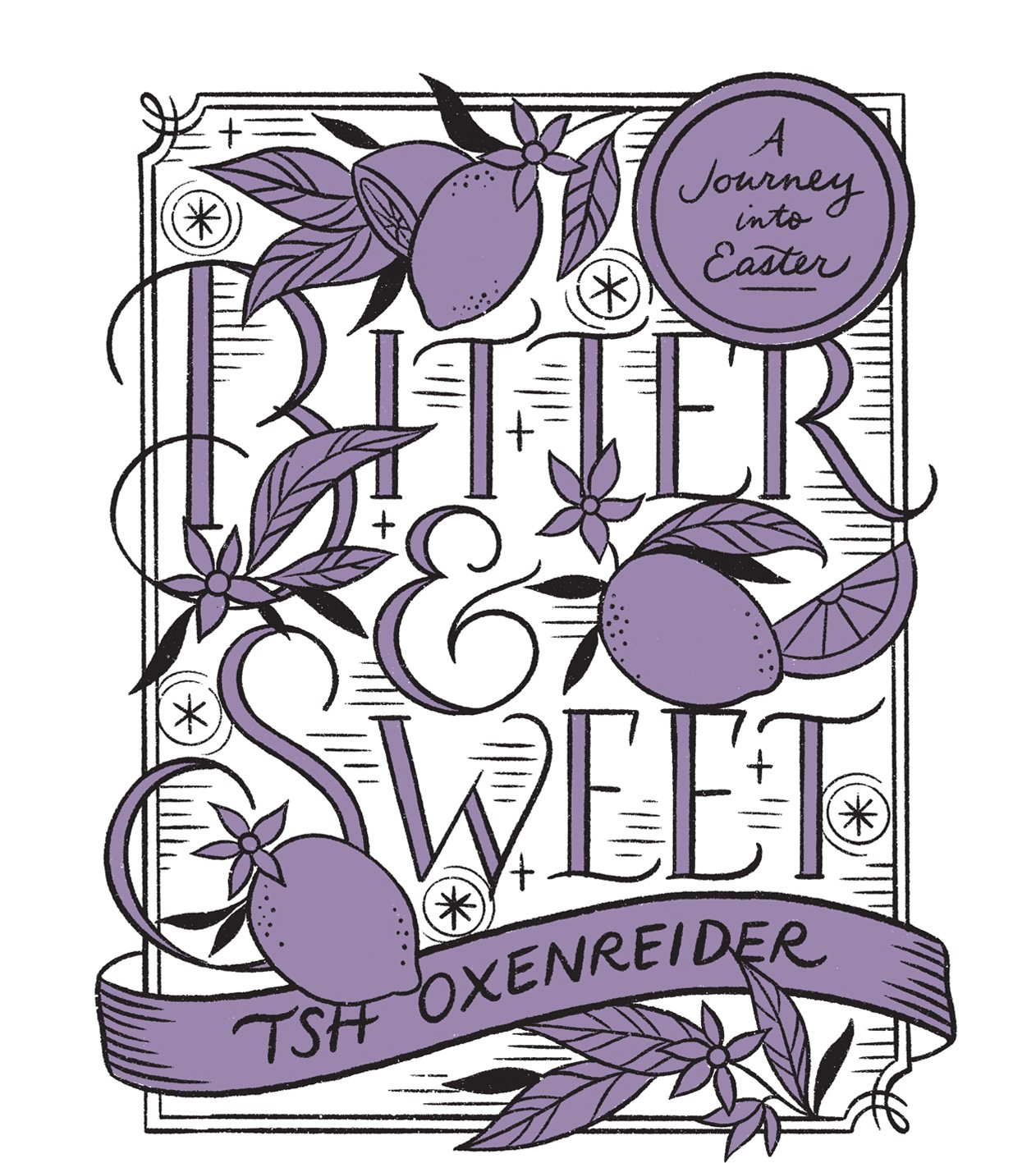
HARVEST HOUSE PUBLISHERS
Eugene, Oregon
Bible versions are at the back of the book
Published in association with Jenni Burke of Illuminate Literary Agency: www.illuminateliterary.com
Cover art by Connie Gabbert Design + Illustration
Interior design by Leah Beachy Photo + Design
For bulk, special sales, or ministry purchases, please call 1-800-547-8979. Email: customerservice@hhpbooks.com
 is a federally registered trademark of the Hawkins Childrens LLC. Harvest House Publishers, Inc., is the exclusive licensee of the trademark.
is a federally registered trademark of the Hawkins Childrens LLC. Harvest House Publishers, Inc., is the exclusive licensee of the trademark.
Bitter and Sweet
Copyright 2022 by Tsh Oxenreider
Published by Harvest House Publishers
Eugene, Oregon 97408
www.harvesthousepublishers.com
ISBN 978-0-7369-8553-6 (Hardcover)
ISBN 978-0-7369-8554-3 (eBook)
Library of Congress Control Number: 2021937793
All rights reserved. No part of this electronic publication may be reproduced, stored in a retrieval system, distributed, or transmitted in any form or by any meanselectronic, mechanical, digital, photocopy, recording, or any otherwithout the prior written permission of the publisher. The authorized purchaser has been granted a nontransferable, nonexclusive, and noncommercial right to access and view this electronic publication, and purchaser agrees to do so only in accordance with the terms of use under which it was purchased or transmitted. Participation in or encouragement of piracy of copyrighted materials in violation of authors and publishers rights is strictly prohibited.
CONTENTS




A dead thing can go with the stream, but only a living thing can go against it.
G.K. CHESTERTON
Lent is strange because Easter is strange. If youve been raised in a tradition in which Easter is routinely recognized, you might have forgotten its peculiarity, but consider: We celebrate freedom from the sting of eternal death because thousands of years ago a humble Jewish man claimed to be the Son of God, then died and rose again. We celebrate with our families and friends, go to church and proclaim, He is risen indeed! and sing songs about the gladness of Jesuss resurrection. In many traditions, new followers are baptized, welcomed into the fold, and then catechized in their newfound faith. From the earliest days of the first-century Church, Christs followers have recognized the sacramental nature of the eucharist by giving thanks with bread and wine.
Secular traditions such as the Easter Bunny and colored hidden eggs are strange enough on their own, being devoid of serious connection to what were actually celebrating. The true historic feast day of Easter alone, without the basket of pastel eggs, is a genuine paschal mystery to our twenty-first century culture, who may look at our claim of a resurrected Savior of the world with skepticism. In terms of the liturgical calendar: Tie in the idea that Eastertide traditionally lasts a full 50 days and the 46 days before that constitute a season of penance called Lent, and we have ourselves a downright bizarre spiritual and communal heritage. Even those of us who do claim faith in the paschal mystery might scratch our heads at why the ancient Church declared the months before Easter a fasting season, why the months afterward are a feasting season, and why millions of Christians still observe it today.
In light of all this, why bother observing Lent? After all, its not in the Bible and Jesus never told us to do it. This was my posture for most of my adult life.
I was raised by loving parents who made sure we attended our evangelical, nondenominational Protestant church almost weekly. The two biggest holidays of the year at church wereyou guessed itChristmas and Easter, with the latter, in my young mind, significantly less important than its companion. Every Easter was a magnificent production with music (sometimes orchestral) and an evangelization-focused sermon, pastel outfits aplenty, and crowds of extra visitors. But in all my years, I never recall recognizing Lent. Lent was a foreign word reserved for the loftier Christians, our Lutheran, Episcopal, and Catholic counterparts.
Not until I began dipping my toes into a more liturgical approach to the Christian life did I understand more about the purpose of Lent. And not until I began reading the words of ancient Christians themselves did I realize just how old a tradition it is.
Now Lent is something I genuinely look forward to in the dark final days of winter, a few weeks after we return the Christmas decor to the attic and just in time for my springtime eagerness. The eagerness is different from the anticipation of Christmas and our household celebrations of Advent; after all, the Lenten season is longer, darker, less culturally festive, and more penitent. But every year we recognize the ancient season, the more my modern-day sensibilities crave it. I feel the need for Lent in my bones. It may be an antiquated tradition, but our modern culture needs it now more than ever.

The liturgical traditions of the Church, all its cycles and services, exist, first of all, in order to help us recover the vision and the taste of that new life which we so easily lose and betray, so that we may repent and return to it.
ALEXANDER SCHMEMANN
Based on ancient writing, we can guess that some form of seasonal penance and preparation for Easter was part of the early Churchs practice. In fact, we read from Saint Irenaeus that, as early as the third century, this variety of observance did not originate in our time, but much further back, in the times of those before us. Throughout ancient Christian literature of the next several hundred years, we can see church leaders instructing local Christians to participate in the spiritual exercises common to Lent.
The number 40 has also always held significance with Gods people, both in the Old and New Testaments. Moses fasted on Mount Sinai for 40 days in preparation of receiving Gods commandments on behalf of the Hebrew people (Exodus 24:18); the prophet Elijah later walked for 40 days and nights to Mount Horeb (1 Kings 19:8); and of course, Jesus fasted and prayed for 40 days in the desert to prepare for his public ministry (Mark 1:13). The early Church seemed to think it fitting that our communal preparation for Easter also last 40 days.
Collective and individual fasting and penance has been a practice of Gods people since the time of the earliest writings in the Bible. Most first-century Christians came from Jewish culture and heritage, and it was natural for them to incorporate their traditions with their new faith and worldview. After all, their Messiah was Jewish! Jesus recognized the customary Jewish practices of the time and was even called a rabbi by his students. As the very Son of God, he didnt shun the human rituals practiced by the culture into which he was born. To shift and create similar rituals and observances as followers of Christ would have been natural.
Font size:
Interval:
Bookmark:
Similar books «Bitter and Sweet: A Journey into Easter»
Look at similar books to Bitter and Sweet: A Journey into Easter. We have selected literature similar in name and meaning in the hope of providing readers with more options to find new, interesting, not yet read works.
Discussion, reviews of the book Bitter and Sweet: A Journey into Easter and just readers' own opinions. Leave your comments, write what you think about the work, its meaning or the main characters. Specify what exactly you liked and what you didn't like, and why you think so.

